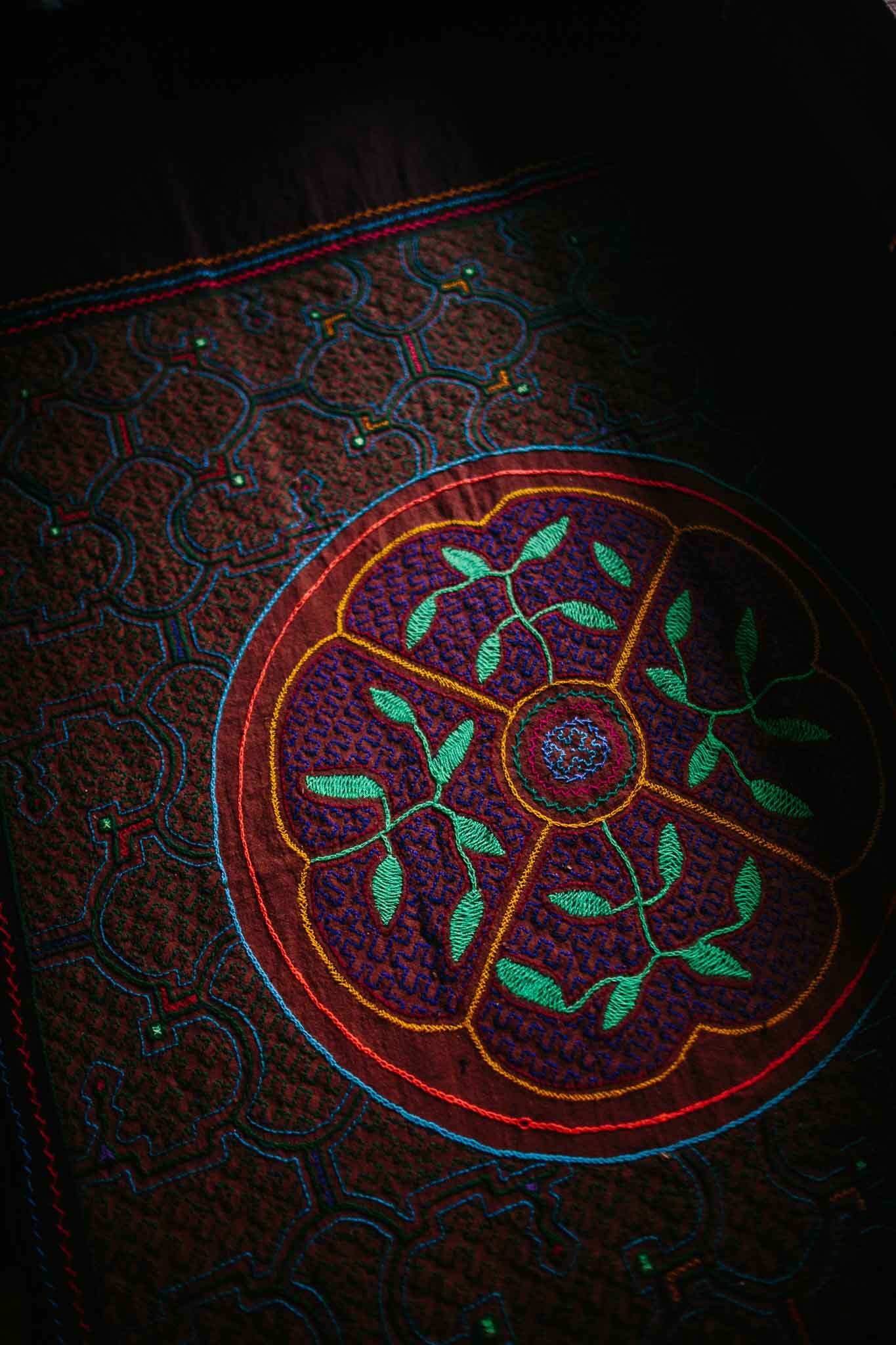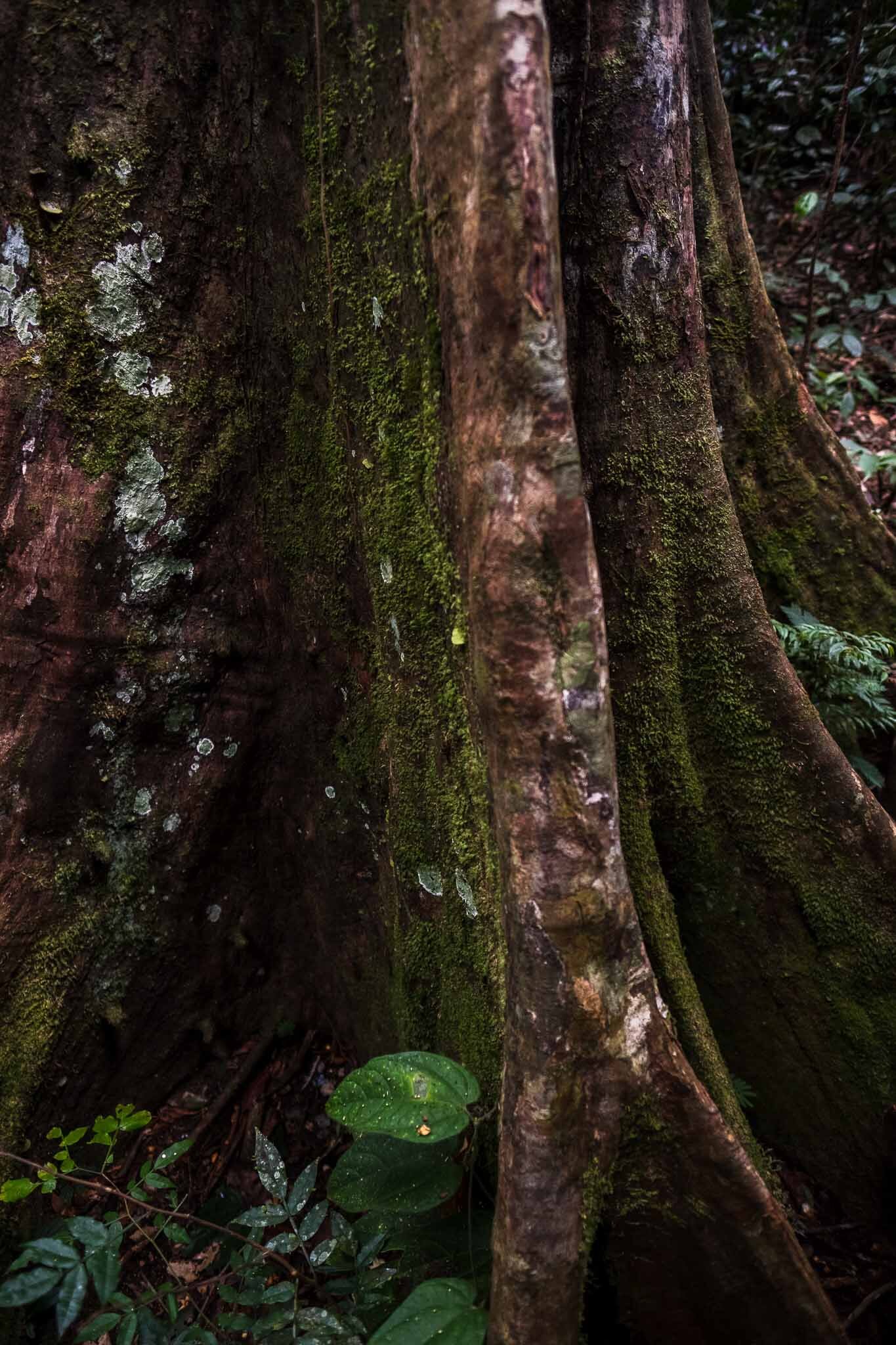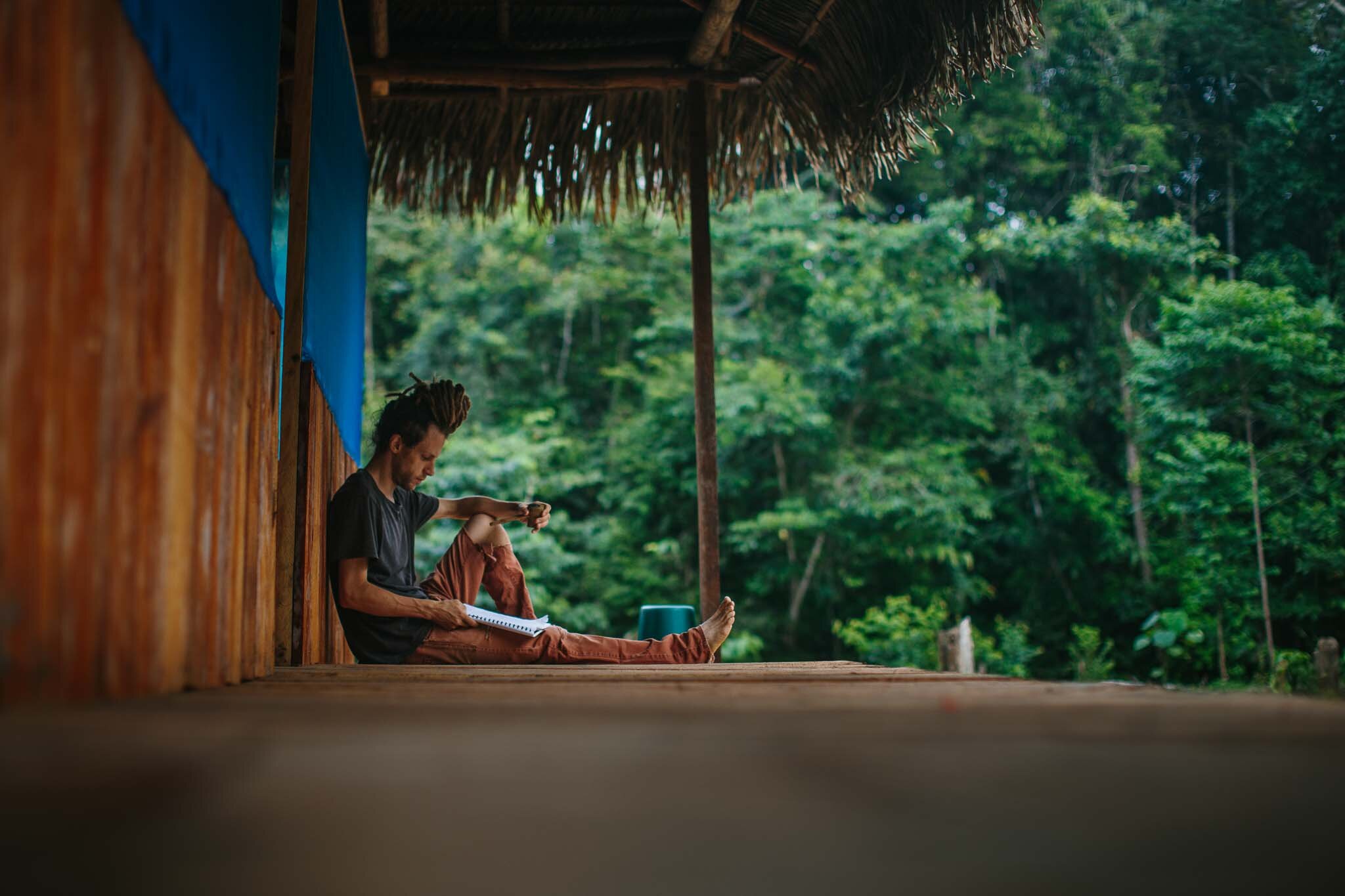This is the second part of a three part introduction to the plant medicine traditions of the Shipibo, working with Ayahuasca, Noya Rao, and other master plants, and apprenticing in the study of Curanderismo. They touch on some of the themes that are explored in further depth in my upcoming book: Water and Light
Find part one here, and part three here.
In our modern world we operate at our own speeds. Most of our daily lives operate at the speed of globalized tech-connected society rather than the slow and steady pace of the earth. Things like ‘Earth overshoot day’ which estimates which day humanity’s consumption outpaces the Earths regenerative capacity for the year really illustrate that disconnect.
There is a general sense of ‘rush’ in our culture as we try to achieve more, do more, make more, and see more. The word ‘rush’ itself subtly denotes the general state of anxiety which is pervasive throughout western culture. As we become caught in the rush of our lives we step out of line with the speed of the earth we live on. In the practice of dieta, it is necessary to slow oneself back down to earthly speeds
The foundation of the Shipibo healing tradition is a practice called ‘dieta’, which is essentially the process of building relationships with plants of power, known as teacher plants or master plants. It is the method for learning to listen to the plants. This practice enables one to tune themselves in to the energy and frequency of their teacher plant by tuning out everything else that would generally distract us from such subtle energetic connections. We’re all familiar with the feeling of having quite a number of different things pressing the buttons of our minds each day. Plants don’t have so many.
There are some very simple and basic aspects of the dieta that facilitate this process of slowing down and tuning in. Isolation is considered ideal, if not essential, as it enables the individual to focus more directly on the plant they are building a relationship with. In dieta we are in a process of removing sensory distractions so that we can heighten our sensitivity to subtle energies like those of plants. In order to do so, all stimulating foods and activities are considered contraindicative. Salt, sugar, spices, stimulants such as caffeine and tea all have strong energetic effects on our bodies and minds, as do activities like sex and masturbation. It is encouraged not only to maintain a very strict and simple diet, but also to eat sparingly. Digestion is one of our body’s major expenditures of energy, and abstaining from food allows the body to rest.
There is a significant mental component as well. The importance of maintaining a positive state of being is beneficial. Love and gratitude are a higher vibrational state of being than something like anger or guilt for example. This isn’t a matter of simple New Age-y ‘love and light’ or ‘good vibes only’, because simply denying or ignoring negative emotions to maintain a positive mentality isn’t enlightened; its bypassing. Instead, maintaining a positive state of being requires us to approach challenges, tests and negative emotions with gratitude for what they have the potential to teach us about ourselves and places we can grow. In this way we can infuse gratitude into the negative aspects, and create a sense of meaning and purpose around our ‘bad’ experiences. This is essential to transmuting those negatives into positives and learning to navigate our lives from a space of love, which brings us closer in line to the resonance of the plants.
Shipibo Onanyabo (curanderos, healers) recognize a wide range of different master plants they work with as teachers. Most plants are recognized to have both light and dark energies associated with them, and so these plants can provide the power either to heal or to harm. Not surprisingly, this is part of why the phenomena of plant-based shamanic sorcery is so prevalent in the Amazon. When working with plants that have darker energies, sometimes ‘harming’ isn’t even a matter of wishing ill on someone. Even our negative emotions are given power, and so our unconscious anger and bad wishes can be given the strength to curse. However, there are some plants that are known to be pure light. Noya Rao is one of those.
Noya Rao is one of the most sought after medicine trees of the Shipibo tradition. It was considered lost for a long time, and for the most part, so was it’s medicine. Maestro Don Enrique once told me that the tree disappeared because people stopped committing themselves to her path. They lost interest. Fortunately, a pipe made from the wood of Noya Rao (which can also be used to learn) was passed down through a single indigenous lineage, that of Don Benjamin Mahua. Eventually Don Benjamin - more widely referred to as Yoda due to some resemblance of both physical and metaphysical nature to the Star Wars character - discovered a Noya Rao tree on the property of his son-in-law Don Enrique, the maestro at the Ayahuasca Foundation’s school for Shipibo medicine Inkan Kena. Since that time, more trees have gradually been discovered in the area. Perhaps it is no coincidence that these discoveries continue at the same time that the interest and commitment of Noya Rao’s students have been sprouting new roots as well.
She is an enlightened celestial being who has come to earth in the form of a tree, say the Shipibo of Noya Rao, in order to give us the opportunity to learn from her. It is often said that she is the mother of all plants, sometimes she is even referred to as the mother of all things, who brought life to earth. When one chooses to work with Noya Rao they must eventually sacrifice or come into right relationship with all things that are not in line with love and truth. Her path is often referred to as el camino de la verdad; the way of truth. This truth is a deeper kind of truth than those battled over and argued about on social media platforms, it regards both universal and very personal truths.
If you previously read part one (here), then you can no doubt recognize how appealing such an introduction would have sounded to me, having grown up on a strict diet of Tolkien and the like. An enlightened spirit comes from ethereal realms to take the form of a tree on earth, offering the medicine of light and truth in an age where light becomes harder to see through the smog and truth becomes further distorted and manipulated by malicious voices. If I wasn’t already convinced of leaping down this rabbit hole before hearing that, I was most certainly convinced by the second day of my first dieta with her. I haven’t yet found the bottom of that rabbit hole, but I am, undoubtedly, still convinced it was the right kind of leap to take.
Dieta has the potential to be a transformational process. It certainly was for me. Growing in relationship with Noya Rao brought a new light of inspiration and presence to my life. She was instrumental in healing me from twelve years of depression that had haunted my ability to grow in the world. Not only did she heal me, but she taught me a deeper understanding of where that depression came from, what it was there to teach me, and what I would need it for. One of the incredible functions of plant medicine is that through the process of healing, the thing that was holding us back (be it disease, mental health, trauma, etc) becomes the very thing that teaches and empowers us to reach new levels in personal growth and embodiment of our truer selves.
My friend Emily meditates beneath a Noya Rao tree, whose bioluminescent leaves glow around her on the forest floor.
Just as we as a culture operate at a different speed or resonance than that of the natural environment around us, our minds often operate through systems and programs that are different than that of our higher truth. In this sense I refer to ‘higher truth’ as being an operating mode that is closer to who we are authentically. Authenticity is what remains when we remove the influence of things that have altered our ability to see things truly. For example; a child who was abused by a male figure in their life may grow up having an unconscious mistrust of all men, and may have issues in relationships or careers as a result. The way this person interacts in the world is affected by an unconscious or semi-conscious bias, and so they react from the place of that program rather than from a place that is more authentic, like recognizing that not all men will repeat the abuse that was experienced in the past, and so sometimes it can be okay to trust.
Humans have the habit of interpreting the world in relation to our past experiences. Our neurology supports this habit. Our brains classify perceived stimuli and experiences using limbic attractors in order to fit things into familiar patterns. This is an evolutionary trait that allows us to react to situations quickly, and with the greatest likelihood of safety. If our perceptions are affected by past traumas, illnesses, and misperceptions, then our ability to appropriately discern threats from opportunities becomes clouded. Our epigenetic programming comes from our evolutionary survival mechanisms. These mechanisms are designed to give the person the best chance of survival, not necessarily the greatest chance of growing into their truest, most vigorously alive self.
As anyone who has participated in the world of traditional talk therapy knows, our ingrained mental programs can be very difficult to unravel. Plant medicines shift the scales. They enable an accelerated process of growing through sickness and trauma. In dieta, the teacher plants gently plant their seeds of wisdom inside for us to tend to in the gardens of our minds. They slowly weed out invasive and parasitic overgrowths of fear, anger, shame, and whatever other rotten roots remain clenched over our hearts from illness, fear, and trauma.
For these reasons among many others, dieta is a practice that can be beneficial for anyone in their healing and personal growth. For someone apprenticing in the Shipibo healing tradition the practice is essential, as it is the foundation of the training to become a healer. Dieta is how the healer builds relationships with plants of power so that they can carry their medicine through to their patients. There is a merger between plant and human, and the healer becomes a medium through which the power of the plant spirit can work. The more one engages in dieta, the more their connection to those spirits is strengthened, and the more healing capacity they can bring to their patients.
Traditionally it takes a student about 10-15 years to become a Maestro, or master healer. This is very generalized as there are many things to take into account, and in the Shipibo tradition the learning and the dietas never actually reach an end point. Much time and energy must be sacrificed in order to be gifted the power of the plants, which is one of the reasons why the Shipibo sometimes begin their apprenticeships at as young an age as 10 or 12 years. When people from outside of the culture come to learn, they may find different obstacles to learning, such as their ideological and cultural beliefs and previous mental programming. Doubt can be a serious challenge. After all, nothing that deals with heart and soul really works that well if you don’t believe in it.
There are many lessons to learn on the path to becoming a healer. Since each person comes to their training from a very different place physically, emotionally, and spiritually, each person’s journey is varied and unique to themselves. In addition, within such an intimate form of plant communication, each individual’s journey is tuned towards precisely the things that they need to grow, with guidance on how to move through the challenges they face. Each persons journey with plant spirit medicine is as unique and beautiful as their own soul, because it is a journey that takes place in the soul of what it means to be human and alive.
In order to truly carry the medicine of a particular plant or spirit, the lessons that are given need to be integrated into the carriers life. This is a process that takes time. Sometimes it will happen in big bursts of upheaval and sometimes slowly as subtle changes and adjustments are made. Through mastering the lessons the plants have given, the medicine of those dietas is brought forth into daily life.
Within the Shipibo tradition, there are an array of medicines and treatments that form the core of their practice outside of dieta. These mostly come in the form of; medicines that are taken internally; poultices; purgatives; vapour baths; and plant baths. There are other treatments as well, but these are some of the most common. All of these treatments, at least nowadays, take place in conjunction with ceremonies of Ayahuasca.
Ayahuasca is rather an illustrious medicine herself, these days, and not without reason. Ayahuasca has been instrumental in the healing journey of many, and will continue to be. Yet the Shipibo consider Ayahuasca alone, without dieta, to have limited potential and greater chance of getting stuck or misled in ones healing journey. Shipibo healers, traditionally, were the only ones to drink Ayahuasca. The patients didn’t need to drink because it is the curandero who is connecting to their dieta plants and bringing that energy into the patient. Ayahuasca in ceremony facilitates a merger of the physical and spiritual dimensions. Traveling through this merge is the healing power of the plant dietas. This healing power is also the Curandero’s source of many diagnoses of patients, medicines and remedies, and knowledge of uses of many different plants.
So it becomes necessary as well for an apprentice to learn to navigate the worlds of Ayahuasca. Just like slowing down from every day life is the transition needed to come in to dieta, learning to navigate and control a ceremony with Ayahuasca in the way of the Shipibo requires a transition into a different world, paradigm, and belief system. There are many different leaves on the tree of learning within the Shipibo traditions. In ceremony, perhaps the most vital and important tool the Curandero has is their voice. It is through singing the songs of the plants and learning to let the plants sing through you that the energy of the ceremony is controlled.
In order to gain the fruits of dieta, one must learn to listen to the plants. In order to solidify those gains into changes in their inner and outer worlds they must tend to the garden within. But to heal others, one must learn to sing with the plants, and this requires a deeper step inside, to walk in a world that most would see as a world of myth. The world of Shipibo curanderismo is one that tends to the mythic roots of human consciousness. By tending to the growing garden of dietas inside, one slowly learns to navigate the world of myth and magic, and to hear and sing in the languages of the plants.
To read about Icaros and myth, check out part three.






